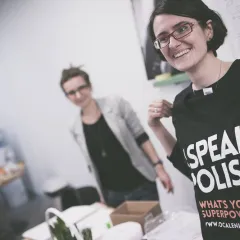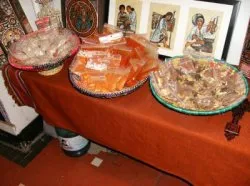I would like to present one of these dishes. This is lentil sauce known under the name of mysyr uot. To this end, Ethiopians use red lentils which disintegrate while cooking and create a tasty sauce.
Many of the Ethiopian dishes are sauces because the base of the Ethiopian’s food is the injera - a flat bread from Ethiopia, usually of 0,5 m of diameter which is used as the foundation upon which you place different kinds of sauces and eat them.
The pieces of this flat bread are torn and used to roll up the food taken from the centre of the dishes. In a natural way, the injera is eaten with the fingers as it is easier to roll it up. When eaten with a fork, it tastes differently, not so good…
The following ingredients are necessary to prepare a portion for 4 people of mysyr uotu:
- a big red onion
- three cloves of garlic
- fresh ginger (same proportion as a garlic)
- tomato concentrate or 4 fresh peeled tomatoes
- a glass of red lentils
- a spoon of a berberie spice
- oil
- a glass of water
- salt to taste
Cut the onion finely and fry it in oil until brown. Add cut garlic cloves, ginger and a berberie spice. Cook it slowly for a while. Add a concentrate or fresh tomatoes, later ½ of a glass of water and simmer for 5 minutes. Then, add rinsed lentils, season them with salt and keep cooking, from time to time, mix them until the lentils are soft (approx. half an hour). Pour water once absorbed by the lentils. The consistency must be thick. It may be served with rice if there is no injera.
Text by Ewa Wołk (Ewa, altogether with her husband, runs a shop with the Ethiopian craftworks and spices known as the Ethiopian Art).
Translated by Agnieszka Rabiega.







































